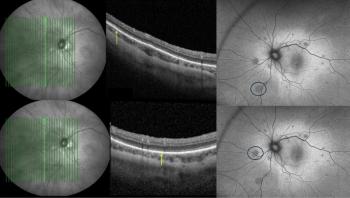
First patients dosed in JC02-88 study
jCyte initiates patient dosing in a new trial for famzeretcel, aiming to transform treatment options for retinitis pigmentosa.
jCyte recently announced the dosing of the first patients enrolled in the JC02-88 study for the evaluation of famzeretcel (jCell; jCyte) for the treatment of retinitis pigmentosa (RP).1 Famzeretcel consists of allogeneic retinal progenitor cells (RPCs) administered via intravitreal injection.2
“The initiation of the patient dosing in this trial marks an important milestone in our mission to bring a breakthrough treatment to the majority of RP patients who currently have limited treatment options,” John Sholar, CEO of jCyte, said in a press release.
JC02-88 is a phase 2 trial evaluating the safety, tolerability, and efficacy of a single 8.8 million cell injection of famzeretcel. The famzeretcel dose being studied in the JC02-88 study is approximately 50% higher than the highest dose administered in previous jCyte clinical trials.1 Patients enrolled will receive either 1 famzeretcel dose or a sham treatment (control) and will be assessed for safety and vision changes over 6 months.
The trial is supported by the Gavin Herbert Eye Institute, the UCI GMP Facility, Lexitas, and the California Institute for Regenerative Medicine. A subsequent extension study is anticipated following the conclusion of the JC02-88 trial.
A couple of basics are needed to achieve a response to famzeretcel, Ophthalmology Times previously reported.2 Based on the neurotrophic mechanism of famzeretcel, it was hypothesized in a phase 2b study that patients with RP need to have sufficient living photoreceptors to enable restoration of visual function.2 Photoreceptors cannot divide and replace dead adjacent photoreceptors. To benefit from neurotrophic factors, a photoreceptor may have lost its function but must still be alive. More specifically, sufficient living cone photoreceptors are needed to achieve a BCVA response to the famzeretcel injection.2
Affecting an estimated 2 million people worldwide, with 100,000 in the United States, RP is a rare genetic disorder that leads to progressive loss of the rod and cone photoreceptors in the retina. Typically diagnosed in adolescence, it causes many patients to become legally blind by middle age.
“This is an exciting development for the RP community, and I am eager to see how this promising therapy advances toward providing a novel cell-therapy treatment for a patient population with vast unmet need,” Paul Sieving, MD, PhD, Neil and MJ Kelly Professor of Ophthalmology at UC Davis School of Medicine and immediate past director of the National Eye Institute at NIH, said in a press release.
Reference:
jCyte Inc. Announces First Patients Treated in JC02-88 Trial for Retinitis Pigmentosa. August 18, 2025. Accessed August 18, 2025.
https://www.businesswire.com/news/home/20250818947550/en/jCyte-Inc.-Announces-First-Patients-Treated-in-JC02-88-Trial-for-Retinitis-Pigmentosa Charters L. Retinal progenitor cells: Targeting retinitis pigmentosa. Ophthalmology Times. 2023;48. Accessed August 18, 2025.
https://www.ophthalmologytimes.com/view/retinal-progenitor-cells-targeting-retinitis-pigmentosa
Newsletter
Keep your retina practice on the forefront—subscribe for expert analysis and emerging trends in retinal disease management.













































